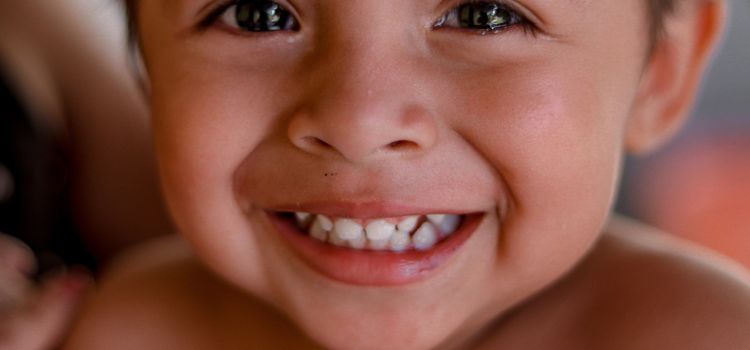As an Amazon Associate I earn from qualifying purchases.
As our children grow, we as parents experience new milestones and difficulties. Every moment is significant, from their first attempts to their first words. The loss of baby teeth is one milestone that often evokes conflicting emotions in both parents and children. What should we do with those little teeth as they fall out? It signals a new stage of growth and development.

We’ll look at some creative and intriguing options for what to do with baby teeth today, giving you a variety of options to think about. We’ve got you covered whether you want to save them as mementos or come up with incredible ways to commemorate this rite of passage. Let’s dive in and discover the opportunities that lie ahead!
Briefly explain the importance of baby teeth and their role in a child’s oral development
When baby teeth begin to fall out, many parents wonder what to do with them. But it’s important to realize the significance of these little, temporary teeth. Baby teeth serve as temporary substitutes for permanent teeth, assisting youngsters in the development of proper speech and articulation. Additionally, they help break down food, which is necessary for proper digestion and nourishment. Additionally, baby teeth maintain the alignment of the jaws and direct the development of permanent teeth. Therefore, it is essential to have a healthy oral hygiene routine from an early age and to take good care of baby teeth.
Provide a guideline on what to do with baby teeth as they naturally fall out
Knowing what to do with baby teeth as they start to naturally fall out is crucial. To preserve the baby teeth as priceless memories, one option is to construct a customized commemorative box. Another option is to adhere to the tooth fairy’s rule, which requires kids to tuck their missing teeth beneath their pillows in return for a little gift or some cash. Although some parents would prefer to only scrape the baby’s teeth, keeping them clean can be a lovely way to cherish those beautiful formative years. Whatever you decide, you must take special care with baby teeth and make sure that your child’s dental health is a top concern.
Understanding the Timeline:
Discuss the typical timeline for baby teeth eruption and shedding
It’s important for parents to be concerned about the normal timeframe for infant teeth to fall out and shed. Parents may plan ahead and take the appropriate measures if they are aware of when to anticipate their child’s teeth to erupt and when they may begin to fall out. Starting with the front bottom teeth and moving up to the front top teeth, baby teeth typically start to emerge about six months of age.
Most children have a complete set of 20 primary teeth by the time they are three years old. Almost about the age of six or seven, the last of the primary teeth will begin to fall out, clearing the way for the permanent teeth. Understanding this schedule may help parents make decisions about what to do with baby teeth, such as teaching children effective oral hygiene habits and seeing the dentist often.
Caring for Baby Teeth:
Provide tips on maintaining good oral hygiene for baby teeth, including brushing techniques and age-appropriate toothpaste
Baby teeth need to have adequate oral hygiene to support healthy dental development. It’s important to have a good brushing routine if you want to take care of your child’s infant teeth. Brush your child’s teeth gently in circular motions using a toothbrush with soft bristles and a pea-sized quantity of toothpaste that is appropriate for their age.
Encourage your kid to spit out the toothpaste after brushing, but advise them to hold off on flushing with water so that the fluoride in the toothpaste can keep their teeth healthy. Consider introducing flossing when your youngster gets older. You may help preserve your child’s baby teeth and set them up for a lifetime of good dental health by implementing these guidelines.
When Baby Teeth Start Falling Out:
Discuss the signs that indicate a baby’s tooth is ready to fall out
A baby’s tooth is ready to come out when one or more indications appear. One of the most common symptoms is when a tooth becomes loose and starts to move. This is a normal procedure when the undercut, unending tooth starts to erupt through the gums. The baby tooth starting to change color, usually becoming darker or grayer, is another telltale indicator.
Additionally, the area around the loose tooth may cause your kid some discomfort or sensitivity. Note that a baby tooth will naturally fall out on its own; you should never force one to do so. When the tooth eventually does come out, be sure to commemorate the occasion with your kid and think of unique ways to preserve their baby teeth as souvenirs.
When a Baby Tooth Falls Out What to Do
Guide how to handle a fallen-out baby tooth, including proper storage and disposal option
Knowing what to do with a baby’s extracted tooth is crucial. The tooth may be properly extracted if the appropriate methods of storage and removal are used. One approach is to keep the tooth wet by reserving it in a little container filled with milk or saliva. By doing so, the tooth may be preserved until it can be transported to a dentist.

Another option is to preserve the tooth in a secure location while enclosing it in a pure tissue or piece of cloth. If saving the tooth is not possible, it may be thrown away in regular garbage. Knowing what to do with baby teeth may provide parents more peace of mind and assist to ensure that the tooth is taken care of appropriately.
The Tooth Fairy Tradition:
Discuss the popular tradition of the Tooth Fairy and how it can be incorporated into the experience of losing baby teeth
An interesting method to mark the occasion of losing baby teeth is the long-standing custom of the Tooth Fairy. Including this fictitious character in their child’s dental experience brings delight to many parents. The Tooth Fairy displays a supernatural remedy. Children put their missing teeth beneath their pillows as a provocative gesture before bed.
When people engage, the Tooth Fairy makes a nocturnal visit and leaves a tiny reward—often money or a small gift—in the place of the tooth. This custom completes memorable recollections for both kids and their families while also enhancing the procedure’s thrill and tension.
Addressing Concerns and Complications:
Identify common concerns related to baby teeth, such as delayed tooth loss or retained baby teeth
It’s important to be aware of typical issues with infant teeth, such as delayed tooth removal or retained baby teeth. Parents and guardians may handle these concerns more effectively if they are aware of what to do with baby teeth. Delayed tooth failure occurs when infant teeth do not come out on schedule, often raising parental anxiety. On the other hand, infant teeth that are preserved are those that do not necessarily create space for future teeth. Parents can ensure that their children have healthy dental development by being aware of these issues and seeking the right dental advice.
Provide information on when to seek professional advice and treatment options for these issues
Knowing when to seek professional guidance and treatment choices for infant teeth is crucial. It may be necessary to see a dentist if your child’s baby teeth are not falling out on their own as they should. It is also advised to seek professional assistance if your kid is experiencing severe discomfort or suffering with their baby teeth. Depending on how severe the problem is, there are many treatment options, such as dental fillings or extractions. For your kid to have the best oral health possible, you must be determined and seek competent counsel.
Dental Health Education for Children:
Offer suggestions on how parents can educate their children about the importance of dental health and the purpose of baby teeth
Parents are crucial in helping their kids understand the value of oral health and the purpose of baby teeth. Parents may start by explaining to their children the value of taking care of their teeth from a young age in order to invest in healthy dental habits. They might emphasize how important infant teeth are for chewing, expressing themselves, and maintaining space for future teeth.
Parents may also make dental health enjoyable by engaging children in activities like touching, using vibrant toothpaste and toothbrushes, and reading books about oral hygiene. Parents may make sure that their children understand the significance of dental health and adopt lifetime practices for maintaining healthy teeth by giving guidance and providing a positive example.
Recommend age-appropriate resources and activities to make learning fun
Looking for activities and support for children your age to make learning enjoyable? For advice on what to do with baby teeth, look at these suggestions! It’s crucial to come up with engaging academic activities for kids to enjoy learning. Combining activities like tooth sprite crafts, scientific experiments, and interactive reading may make the process entertaining while also assisting children in understanding the importance of oral health. You may create a positive and dynamic learning environment for children while educating them about the significance of baby teeth by utilizing this age-appropriate assistance.

Conclusion
In conclusion, parents and guardians must be aware of what to do with baby teeth. Determining how to treat these little teeth may have a long-lasting impact, despite the fact that it could seem like a minor matter. It is important to make a well-informed choice that is consistent with your concerns and ideals, regardless of whether you want to preserve them as priceless memories, donate them for investigation, or just dispose of them. Remember that every tooth has a unique tale to tell about your child’s development, and by weighing your choices, you can find a meaningful way to commemorate this major turning point in your life.
Amazon and the Amazon logo are trademarks of Amazon.com, Inc, or its affiliates.